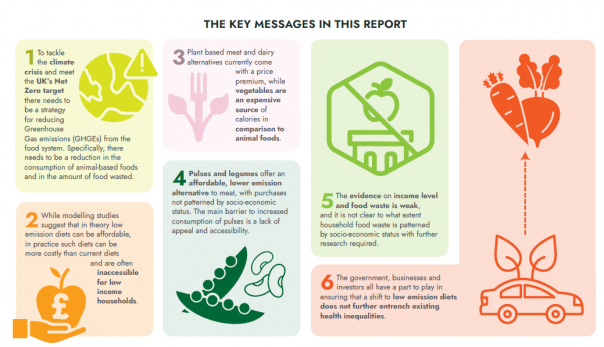
Challenges include the relative price of plant foods such as vegetables and plant-based alternatives compared to animal source foods.
Anna Taylor, executive director of The Food Foundation, said: “The window of opportunity for averting the worst impacts of climate change is closing rapidly. If we have any chance of meeting the UK’s net zero target we urgently need a strategy for supporting people to shift their diets towards more plant foods, with less meat and dairy.
“Such diets need to be affordable and accessible for everyone, otherwise we risk sleepwalking into a food environment where more sustainable diets are the preserve only of the wealthy, with a widening of the already very steep dietary inequalities we see in the UK.”
If the UK Government is to meet its Net Zero by 2050 target, Greenhouse Gas emissions (GHGEs) from the food system will need to be reduced by shifting UK diets and reducing food waste.
In the UK, meat accounts for the largest proportion of GHGEs associated with diet (32%), with an additional 14% from dairy products, while post-farm gate food waste is estimated to contribute 25 million tonnes of CO2, which is equivalent to around 5% of the UK’s domestic GHGEs.
Simon Billing, executive director of the Eating Better alliance, added: "Reaching our ambitions for net zero will require a significant change in the populations' diet in a way that is healthy and just.
“The Food Foundation's new report highlights the need for intervention to invest in consumption-based measures, such as Healthy Start vouchers and cash-first approaches, to make vegetables and pulses accessible to those on the lowest incomes."
Pulses and legumes offer an affordable and lower emission alternative to meat, with purchases not patterned by socio-economic status. The main barrier to increased consumption of pulses is a lack of appeal and accessibility.